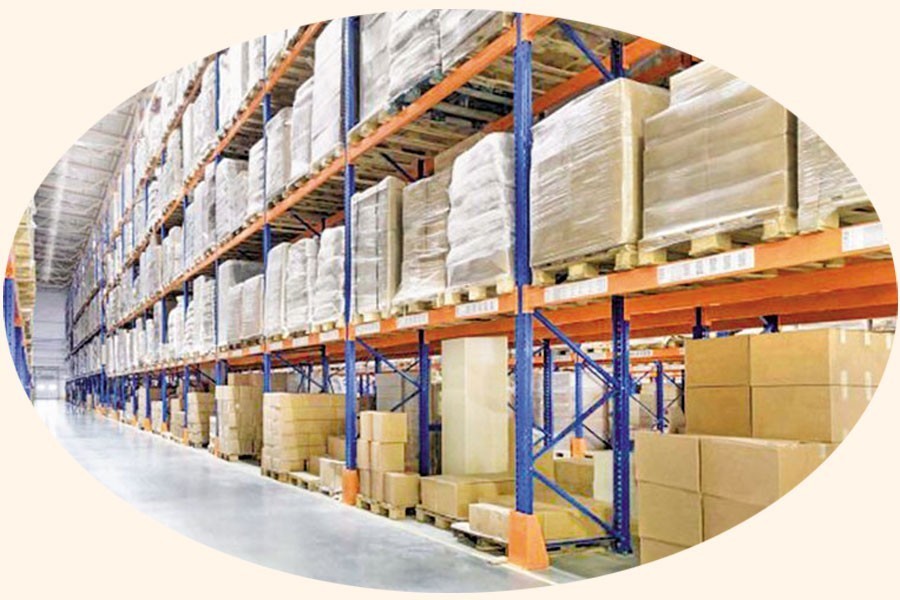Reports have it that the government is up for digitising bonded warehouse system for export and to this effect some preparatory works have also been done. The NBR formed a committee in March this year to propose amendments to or incorporation of the Customs Act's relevant sections to automate bond management. The committee, reportedly, submitted its report in April, 2022, which will be of help to draft a comprehensive legislative regulatory framework for bond automation, according to a report published in the FE quoting NBR sources. A project regarding bond automation was taken up by the NBR in 2017, meant for completion in June, 2021. The tenure of the project got extended till June, 2023, believed to be due to less than expected progress of work.
Ever since the evolution of bonded warehousing in the country as a substitute to Duty Draw Back in the late eighties, the necessity of the system notwithstanding, there were debates whether it could be made smoothly functional to cater to the country's bourgeoning exports, especially of readymade garments. In fact, it was mainly to facilitate garment export that the system was put in place--- with gears to stop it going haywire.
Bonded warehousing is a service that allows exporters to import and store their raw materials without payment of customs duties for a certain period of time until these are used in the manufacture of exported products. Bonded warehousing in Bangladesh was instrumental in bringing much of the vigour and dynamism that the country's export sector needed badly. Since the early-eighties when garment export began to indicate signs of promise, bonded warehousing was one of the key mechanisms, along with back-to-back letter of credit, that succeeded in materialising much of what the business community was up for. However, there were talks of misuse of the system by unscrupulous exporters. But the mechanism --- backed by maintenance of Passbook by Customs officials of imported goods stocked in the bonded warehouses and exported subsequently --- was meant to guard against any kind of misdeeds, as well as ensure transparency.
This does not seem to have materialised. The facility offered by the government has often been termed a happy hunting ground for errant players. Although there are apparently stringent rules governing the system, often hailed by the authorities as foolproof against misuse, the allegation that raw and packing materials imported duty-free and warehoused under supervision of the Customs wing of the National Board of Revenue (NBR) are recklessly pilfered is widespread.
Years ago, it was none but a former NBR chief who alleged that goods imported without paying duties under bond system were landing up in the wholesale markets. Now, if imported goods --- mainly fabrics ---make it to the wholesale markets without payment of duties, loss of government revenue is sure to be significantly high. It is inevitable to be so. But the big question that cannot be missed is the manner in which it is practised. For, it is the Customs officials who are the custodians of bonded warehouses.
Availability of plentiful imported fabrics in the wholesale markets of the country is well known. But to question that these are all pilfered is to question the very foundation on which the bond mechanism is based. Legally, only a little quantity of fabrics can make its way to the open market, depending on saving of fabrics after completion of export order. A certain tolerance limit is allowed in the utilisation criterion for making various types of garments. But this in no way should constitute any major loophole to allow massive quantities of duty-free imported fabrics flooding the market. Worst of all, it leaves a seriously injurious effect on local fabric production. Calculation of the loss of government revenue, if at all possible, would indeed be shocking.
It is against this backdrop that ensuring transparency in the system through automation/digitisation began to come to the fore. About the progress of the project referred to above is not known. However, reports published in this and other newspapers did not give a positive picture until recently. A number of relevant entities, both in public and private sectors, are involved with the project. The stakeholders include exporters, the Bangladesh Export-Processing Zones Authority (BEPZA) and the Bangladesh Bank (BB). Although the garment sector is the main beneficiary of the bond system, it is well argued that automated bond management will encourage the NBR to open up the facility to other prospective export sectors which need to import bulk quantities of raw and intermediate materials for export manufacturing. This will help such exporters to substantially save on the cost they incur due to long lead time.
It is understandable that automating the bond management will face teething problem at the beginning given the need for the huge manually operated tasks to be brought under a comprehensive digital frame. It is pertinent here to say that starting the process in piecemeal may not be a good idea at all. However, to begin with, trial run may be conducted to ensure that all critical areas are taken on board.


